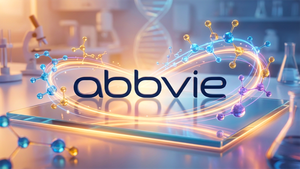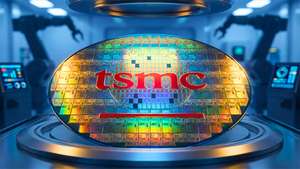 Photo from Unsplash
Photo from Unsplash
Originally Posted On: https://printiverse.com/choosing-the-right-file-type-for-printing/
Selecting the appropriate file type is essential for achieving the desired printing outcome. However, with the myriad of image file formats available, it can be challenging to determine which one suits your specific print project.
In today’s guide, we will explore image file formats, discuss the differences between raster and vector images, and explore the various file types used in printing. By the end, you’ll clearly understand how to choose the right file type to ensure a successful print project.
Image File Formats
Before we dive into the specifics of file types, it’s crucial to understand what image file formats are and how they differ. Every graphic you encounter online originates from an image file, whether displayed on a plastic surface, paper, or a T-shirt. These image files come in various formats, each with its own unique characteristics and uses.
Raster Images vs. Vector Images
Image files can be broadly categorized into two types: raster images and vector images. Raster images consist of pixels and are commonly used for photographs, digital artwork, and web graphics. These images rely on resolution and can appear blurry or “pixelated” when enlarged beyond their original size.
On the other hand, vector images are composed of geometric shapes such as lines, curves, and polygons. They are resolution-independent and maintain their clarity, sharpness, and detail regardless of the size at which they are displayed. This makes vector images ideal for logos, illustrations, and designs that require scalability without compromising quality.
File Types for Printing
Now that we understand the distinction between raster and vector images, let’s explore the various file types commonly used in printing. Each file type has its own strengths and best-suited applications. By familiarizing ourselves with these formats, we can make informed decisions when preparing our files for printing.
JPEG/JPG
JPEG, short for Joint Photographic Experts Group, is a widely used image format that is pixel-based and easily adjustable. It is suitable for most images, online photos, and digital artwork. However, it is important to note that JPEG files may lose quality when compressed and saved repeatedly. Therefore, it is not recommended for graphics requiring transparency or layered and editable images.
PDF, or Portable Document Format, is a versatile format for print and web-based documents. It provides a solid foundation for graphics, ensuring consistent display across different devices, web browsers, applications, and operating systems. PDF files can accommodate a wide range of content, including images, documents, spreadsheets, form fields, and more. This makes PDF an excellent choice for final designs, production files, as well as materials such as posters, booklets, magazines, and flyers.
EPS
EPS, also known as Encapsulated PostScript, is primarily used for vector graphics but can also support raster images. It is particularly well-suited for high-resolution illustrations that need to be incorporated into larger designs. EPS files are commonly used for large signs, banners, and vector logos. However, they are not recommended for artwork, photographs, or situations where online image display is required.
AI
AI, the default file format for Adobe Illustrator, combines EPS and PDF standards elements. Adobe Illustrator files can be exported to various formats such as JPEG, GIF, TIFF, PNG, and PSD for editing and web use. Additionally, they can be saved as PDF and EPS for proofing and printing purposes.
AI files are ideal for editing vector designs, creating brand mascots, logos, icons, single-page print pieces, or any situation that necessitates a specific type for a logo. However, they are not suitable for editing raster images. We recommend AI for adding cut lines to stickers.
PSD
PSD, the default file format for Adobe Photoshop, allows for creating and editing raster images with multiple layers and adjustments. It is commonly used for retouching photos, editing artwork, animation, video, website and app mockups, as well as digital images for the web, such as banner ads, videos, social media images, email headers, and more. PSD files offer extensive editing capabilities but are not recommended for posting photos online or when the design is ready for printing.
PNG
PNG, short for Portable Network Graphics, serves as an alternative to GIFs. It features built-in transparency, enabling users to layer images seamlessly. Additionally, PNG files offer better compression and can display higher color depths. They are ideal for high-quality, transparent web graphics, limited-color illustrations, and small files containing short text, colors, or shapes. However, PNG is not suitable for print projects, photos, or artwork.
TIFF
TIFF, or Tagged Image File Format, is designed to handle raster or bitmapped images. It is commonly used in photography and desktop publishing, making it an excellent choice for high-quality print graphics, scans, artwork, and printing photos. However, TIFF files are not recommended for web graphics.
GIF
GIF, an acronym for Graphics Interchange Format, is a popular web image format known for its support of animated graphics. It is commonly used for banner ads, social media memes, email images, and other web-based visuals. GIF files are best suited for web animation, images with transparency, and small image files. However, they are not suitable for photographic-quality images, printing, or editing layered images.
RAW
RAW is an image format that contains unprocessed data directly from a digital camera or scanner’s sensor. These files can be edited using software like Adobe Photoshop, allowing for precise adjustments. Variations of raw formats include NEF, DNG, and CRW. RAW files are primarily used for shooting and editing photos but are not recommended for web graphics or printing photos directly.
SVG
SVG, or Scalable Vector Graphics, is an XML-based vector image format. It offers scalability, smaller file sizes, and can be edited in text editors and other graphic editing software. SVG files are best suited for diagrams and graphs intended for web publishing. However, they are unsuitable for print projects requiring a specific file format.
Color Models
Understanding color models is essential in graphic design. The two primary color models are RGB and CMYK. RGB stands for red, green, and blue, and it is a color model based on light. By combining these primary colors, a wide spectrum of colors can be produced. RGB files are commonly used for mobile phones, videos, film, and web optimization.
On the other hand, CMYK represents four colors: cyan, magenta, yellow, and key (black). This color model is best suited for printing, as printers can accurately interpret and reproduce colors in CMYK format. When preparing files for print, it is advisable to use CMYK color mode to ensure optimal color quality and consistency.
Final Thoughts
Choosing the right file type for your printing project is crucial for achieving the desired results. Understanding the differences between image file formats and the distinctions between raster and vector images allows you to make informed decisions when saving and preparing files for printing.
By selecting the appropriate file type, you can save time, money, and prevent any potential mistakes or quality issues during the production process. Whether it’s JPEG, PDF, EPS, AI, PSD, PNG, TIFF, GIF, RAW, or SVG, knowing the correct file type for your specific print project ensures a smooth and successful printing experience.





